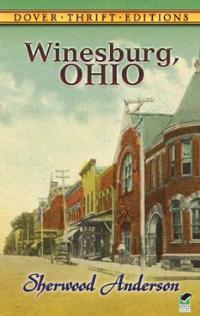I often hear book editors discuss the “sense of place” in a novel. For good reason. It dictates so much. Setting allows the rest of the book to operate—it sets limits and creates opportunity; it inspires and deflates; it antagonizes, provokes, and reacts—offering the space that creates change.
Setting is character with voice. The trademark cities of America animate countless novels: John Fante’s Los Angeles, Saul Bellow’s Chicago, Don DeLillo’s New York. Our great metropolises are well represented in literature. They are complicated, dense messes of people that offer endless material for writers to mine.
But take away the city—the industry, ambition, penthouses, projects, throughways, development, and “districts”; the galleries, Michelin stars, and secondary residences; the haute couture and haute croissants, the openings, and “events.” Take several million down to several hundred, and we have the small town—an American oddity seemingly untouched by time. A place less represented in our literature. A place where wide fields push back the cultural tides of the coasts.
This was the cold water on the face when I visited my home state of Kansas over winter break. Back for the first time in years, I was taken by the dramatic effect place had on me. My midtown Manhattan was gone. My Avenue A was missing. I couldn’t air out my day at the Met.
So I took a sentimental journey with my dad to Walton, Kansas, where he spent his boyhood, and where many of my paternal ancestors lay in rest. At the cemetery, setting carnations on headstones, I looked up to see the freight rail from which the town of 235 people had sprung. Main Street is a few hundred feet. The grain silo is the skyscraper. The dry-goods store closed for the day. The two-cell jailhouse decayed. It was terribly refreshing. The sense of place in Walton was just as strong as the sense of place in New York City.
To help unpack my experience I took to reading Sherwood Anderson’s classic 1919 novel WINESBURG, OHIO. A cycle of short stories, the novel portrays the solitary lives of this fictional town’s residents. It’s the turn of the century and George Willard is a young reporter at the Winesburg Eagle and a vortex for the town’s isolated inhabitants. With each telling of a character’s condition, we see small town life rendered bright by the interior lives of its citizens. The sketches add up to a striking portrait of place. The characters are heavy with anxiousness. They fail to communicate and fall at the feet of love and death.
Winesburg is a place of “whispered tales,” of “nervous” and “timid” folks who are settled in the culture of the front porch. It’s a place with “a colorless, soft-voiced lot” of old men “of some dignity in the community.” Life is governed by the seasons. It’s the “Middle Western” region—those forgotten flyover states.
Anderson’s town draws a claustrophobic circle around its people. They are framed by farms. It is plain and ordinary. Through George we meet the saloonkeeper, doctor, lawyer, mother, father, sister, druggist, teacher, baker, banker, and reverend. Together they form a network of reputations, frozen ambition, and dreams. They are alien—from one another and from the world. The city is a sea away. In this space they unknowingly create their own myths.
Arrested by Winesburg’s smallness, people struggle to become. The town defines what is adequate, what is an adventure, and what is a “courageous act.” The impulse to leave is strong and George expresses early, “‘I don’t know where I shall go or what I shall do but I am going away.’” And George does leave for the city. He’s spent a life tending to others and must now tend to himself. This sense of spiritual and material longing strikes most characters in the book. But is it a result of their environment or themselves?
The tale of leaving the small town for the big city is familiar, if not tired. But it’s a tale that endures. Place is central in literature because place is central in our lives. It dictates a lot, but it doesn’t dictate all. Our identities are tightly wound with place. New Yorkers thrive on it; perhaps rely on it. But take away place and we’re forced to deal with something much more confrontational—ourselves.
The Winesburgians are an unhappy lot. But their circumstance is a brew of place and person not to be fully blamed on the town. Its characters turn out to be a tumultuous bunch and this country setting leads to a very modern novel. The book is experimental in its telling with hardly a plot to speak of. Anderson divorces the book from Paris, Madrid, and New York—places where his modernist colleagues found their voice. The break from urbanity is what makes this book unique.
Walton, Kansas, is Winesburg. It’s provincial to those gazing from the outside. It’s monumental yet unattended. Waltonians work and fear and love. They live and die there. Just the same all around the world, place moves and changes us. I left Walton and returned to the city with a stronger sense of both places, a story Anderson’s work tells unlike any other.








